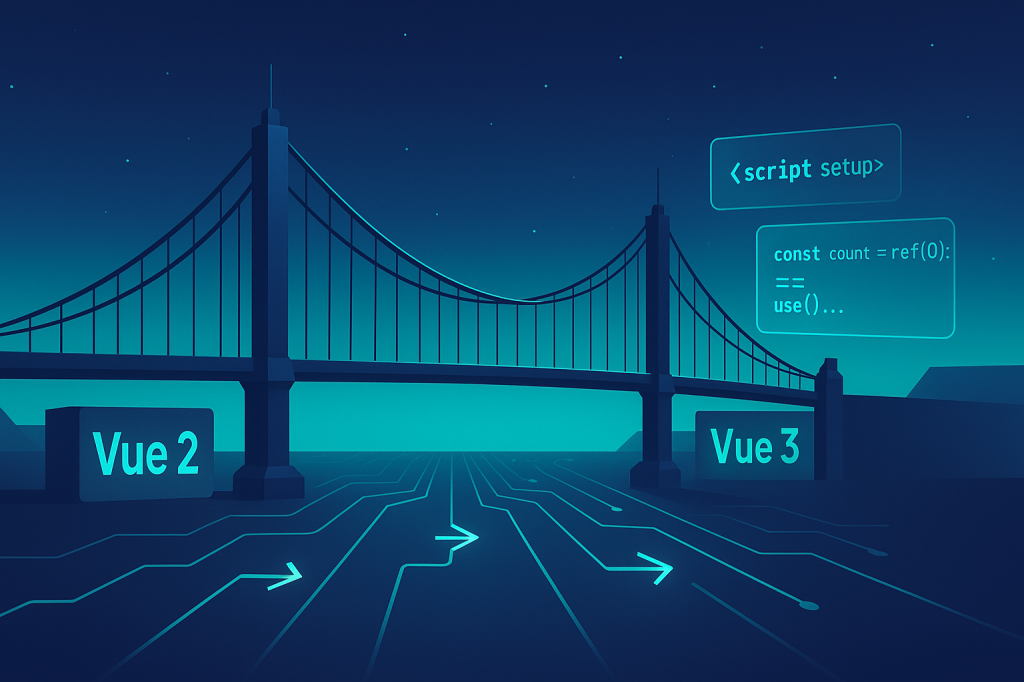What is the Purpose of Stack?
Building a good stack is no easy feat; as many developers can attest, there are plenty of combinations of frameworks to choose from. The deciding factor between a good or bad stack is its practicality in projects and if the result is usable, maintainable, and scalable. When selecting a stack, newness is not always the best option. This article will explain the framework components of the VILT stack and TALL stack, their differences, their real-world applications, and their significant benefits and drawbacks.
What Elements Do They Share?
The TALL and VILT stacks are two development stacks designed to create interactive applications, using Laravel as the core element. VILT (Vue.js, Inertia.js, Laravel, TailwindCSS) and TALL (TailwindCSS, Alpine.js, Laravel, Livewire) have both been tested to work efficiently in unison.

The Laravel PHP Framework
Developed and created by Taylor Otwell, Laravel is an open-source PHP framework that makes constructing web apps straightforward. It uses the MVC pattern, which is easy to understand if you have a decent grip on PHP. Additionally, it has a unique strategy for well-known problems and fully utilizes PHP’s known and unknown features. The result is a more regulated web app that can add and alter features quickly and easily.
Moreover, you will benefit from numerous open-source packages made and maintained by Laravel’s enormous community. This saves a great deal of time when planning and constructing web applications.

Tailwind CSS Framework
A CSS library provides users with a comprehensive toolset to help them create user interfaces quickly and efficiently. It offers a wide range of options to customize the look and feel of a UI, allowing users to create beautiful and unique designs from a library of components. It also makes creating responsive designs that look great on all devices easy.
Tailwind is a CSS framework at its core. Each class you create isn’t generalized and encompasses a group of CSS properties; usually, one class only adds one property. This gives developers a lot of control, freedom, and room to experiment with various designs and customize components without worrying about other parts of their project being affected.
The primary benefit of Tailwind is that it does not dictate design specifications or how a website should look; instead, it just helps to create a website with a unique user interface by connecting the small elements. Tailwind is a set of pre-generated classes and CSS properties based on the configuration files that can be further extended to generate custom classes specific to the website (such as font sizes and colors). This makes Tailwind highly customizable and can be used for any project.
Finally, Tailwind CSS is also known for its rapid UI design process and utility classes, eliminating the need to write CSS manually, as was done in the past. Plus, it won’t slow down your computer with all the SASS/SCSS files.
👋 Want to talk to a development team focused on VILT and TALL stack?
The TALL Stack Configuration
This acronym is an assemblage of technologies for web development that stands for
- Tailwind
- Alpine.js
- Laravel
- Livewire
With the TALL Stack, front-end developers can design, develop, and deploy a responsive web app quickly and easily.
Livewire has been a big reason why the TALL stack has become so prevalent among Laravel developers, as it has diminished the requirement to rely on front-end frameworks such as React and Vue. PHP developers can save time and effort by utilizing these four technologies instead of relying on a comprehensive Javascript framework. There are many alternatives for quickly and efficiently implementing various functions and tasks.
Alpine.js
When discussing the TALL Stack, Alpine.js should also be highlighted. This lightweight front-end framework, developed by Caleb Porzio, enables the embedding of JavaScript functions into HTML. It is especially effective when only a few JavaScript lines are needed, such as one or two sidebars, tabs, windows, or image selection. The framework is beneficial for server-side-rendered apps like Laravel that need to control specific DOM elements. Moreover, it is easy to set up and does not require a virtual DOM, so there are no building stages.
Alpine.js allows users to take advantage of larger frameworks’ reactive and declarative properties (e.g., Vue, React) at a fraction of the cost. It will enable you to manipulate the DOM and incorporate interactive features when necessary. With it, you can likely satisfy most of your front-end needs, such as showing/hiding DOM nodes, linking data to inputs, reacting to events, and altering the UI as needed.
When utilizing Livewire, using Alpine.js to aid in the process is common. There are helper functions that make it possible to trigger Livewire events or tie data to Livewire properties. Even if Livewire is used without any front-end tools, the need for Alpine.js is likely to arise.

Livewire
Livewire is a full-stack framework for Laravel that enables developers to create reactive applications without using JavaScript, only PHP classes and components. Although JavaScript still functions in the background, developers don’t need to understand what’s happening. When the user makes a change, Livewire’s javascript library sends a request to the web server. Then, the web server processes the data and returns a modified object. Subsequently, Livewire changes the front end in accordance with the modifications. As the user won’t notice anything, it appears the same as a SPA app.
Vue.js served as a significant source of motivation for this project, yet they changed the script portion of the Vue components to a PHP class. This alteration makes it easier to manage since all the reasoning is expressed in just one language. With the classic approach, some of the logic would be expressed in JavaScript; however, this would be superfluous since you cannot entirely rely on JavaScript for the application’s logic part. This implies that the logic would often be duplicated, one for JavaScript and one for PHP.
The initial response from Livewire is produced on the server side, thus optimizing the framework for search engines. This is a great option to use when creating a dynamic and interactive web application but want to explore something other than a comprehensive JavaScript system like Vue.js. It has some particular features you should know when using the Livewire framework.
The TALL stack offers a significant advantage in that, with the Livewire platform, web development can be completed in a much shorter time frame. This could benefit businesses, as it lessens the time and money spent and allows developers to enhance their efficiency and become more profitable.
Though it may seem like the perfect solution, the TALL stack has its negatives. One of the main problems is its reliance on HTTP requests for communication between the front-end and back-end. Because of this, it can be easy to overlook something and send more requests than necessary. Additionally, the number of requests and debugging can become complex as the project grows.
VILT Stack
The VILT stack is basically like the TALL stack, except it includes Vue.js instead of Livewire. Inertia.js allows users to create single-page applications without having to construct an API. This stack is advantageous as it boosts speed, keeps code clean by clearly distinguishing duties, uses the most advanced CSS practices, and is responsive. These features are enabled through four different technologies, namely:
- Vue.js
- Inertia.js
- Laravel
- Tailwind CSS
When we compare TALL Stack to the VILT stack, the two technologies they share are Laravel and Tailwind CSS. Now, let’s analyze the distinctions between Vue.js and Inertia.js.

Vue.js
Vue.js is a JavaScript framework created by software developer Evan You that can be used for developing user interfaces and single-page applications. It combines the benefits of the most modern tools, providing developers with a robust and adaptable platform.
Vue.js is an efficient and lightweight library. Similarly to React, it employs a virtual DOM and provides a fast and responsive way to address issues in the front end. Vue.js offers an attractive way of constructing reusable components. Although you can create components similar to React, Vue’s classic approach is to have script and template tags in a single component; adding style tags is optional. Having the HTML detached from the script part of the code facilitates its readability and maintenance.
When it comes to when to employ Vue.js, it is crucial to understand that it is lightweight. However, that doesn’t mean it is suitable for every undertaking. Since Vue utilizes JavaScript for updating and rendering DOM elements, it will always be slower than plain HTML. Therefore, if you are constructing an action-laden front-end website or application, Vue.js can be a valuable companion.
When planning a project utilizing vue.js, as little JavaScript as possible should be loaded to maximize the performance. In the past, larger bundles for projects using the framework were an issue. Still, this difficulty is typically solved by code splitting and dynamic component loading, making this concern less problematic.

Inertia.js
Created by developer Jonathan Reinink, this library allows users to create single-page applications with ease. Inertia.js provides a seamless way to handle routing, page transitions, and other standard components of web applications. It also offers several other features that simplify creating web apps.
Inertia.js is the connection between Laravel and Front-end, Vue.js in the VILT Stack. It works by using adapters. There are three official adapters for the client (React, Vue, and Svelte) and two for the server (Laravel and Rails). Inertia.js is like the adhesive that binds the two frameworks.
Inertia is a complex program, allowing for various degrees of abstraction. At its most basic level, it can return views from controllers without needing a mental shift, just as one would do with a standard Laravel controller.
Laravel is utilized to its fullest potential with Vue. It acts as a bridge between the two. Instead of using Vue for your routing, this can be taken care of by Laravel. As a result, you can get a server-side rendered Vue.js application. This combination of server-side and client-side JS is the best of both worlds.
In Conclusion
If you wish for your back-end developers to be just as efficient on the front end as on the back end, then the TALL stack is an ideal set of technologies to select. However, you must be prepared to make certain concessions while doing so.
The VILT stack is a more reliable alternative to the TALL stack, granting you greater stability and scalability. However, the combined use of two major technologies (VueJs and Laravel) in the same project adds to the complexity and development time, yet it is often worth the effort.
Leverage our expertise for your TALL or VILT dev environment
Curotec development team offers expert consulting, project carve-outs, and staff augmentation in the Laravel and Vue ecosystems. Contact us today for a free consultation.









